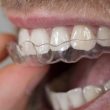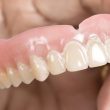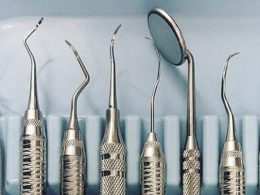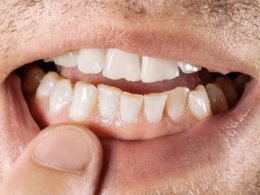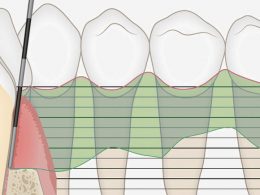Table of Contents
While scaling and root planing and other types of gum therapy can help treat mild to moderate cases of gum disease, advanced periodontal disease may only be effectively treated with gum surgery. Periodontal surgery can help us restore oral health and aesthetics to your gums.
There are many types of gum surgery procedures being practiced, but we will help you choose which treatment is right for you based on the condition of your smile and your desired outcomes. Treating advanced gum disease can help you improve your overall health, as gum disease has been linked to serious systemic diseases such as heart disease and diabetes.
With the help of advanced technology, gentle techniques, and comfortable anesthesia, you can undergo surgery in less time and with less pain than ever before.
Among the most frequent interventions for the treatment of anatomic anomalies, diseases and infections that attack the supporting tissues of the teeth and for the aesthetic correction of the gums, we can find:
Mucogingival Surgery
The term mucogingival indicate any surgery designed to preserve attached gingiva (the most resistant against periodontal disease), to remove frena or muscle attachments and to increase the depth of the vestibule. The aim of this type of surgery is maintain an adequate amount of attached gingiva, prevent periodontitis, correct any anatomical defect of the gum and maintain its health condition.
Appropriate for both adults and children, we can perform a frenectomy to remove the connective tissue known as the frenum, which attaches the upper or lower lips to the gums. This tissue can cause functional and cosmetic concerns for patients. For example, an enlarged frenum can cause a gap between the two front teeth or affect your speech. The frenum can be removed with a scalpel or a laser, which can reduce your surgery and recovery time.
Operculectomy
Simply put, an operculum is a flap of excess tissue covering a partially erupted tooth, and it is usually seen on the lower third molars. This flap of tissue may be hard to keep clean, which can lead to food debris and bacteria becoming trapped in the area and causing an inflammation, known as pericoronaritis. Removing excess tissue will immediately solve the problem and allow the tooth to erupt without major inconvenience.
Impacted Tooth Exposure
If a tooth is trapped underneath the gums, we can perform an exposure and bracketing of the impacted tooth. During this procedure, our Periodontist will lift up the gum at the impact site to expose the tooth. After accessing the impacted tooth, he will place a bracket around the tooth to gently force it into proper positioning.
Flap Surgery
Periodontal flap surgery describes the state of-the-art techniques and most commonly used approach to treat deformities and tissue loss created by the disease process, eliminating “pockets” of diseased tissue in order to create and maintain periodontal health.
Different techniques have been developed to deal with the gingival tissues and underlying bone. The objectives of periodontal flap surgery are to eliminate or reduce pockets, regenerate periodontal tissues and their re-attachment to the teeth, create more normal periodontal form, function, and aesthetics; and promote an environment more conducive to good oral hygiene practices and professional maintenance care.
Soft Tissue Grafts
During the treatment, one may need to have some of the impaired soft tissue reinforced, where soft tissue graft helps. It is done by removing a small amount of tissue from the roof of the patient’s mouth or another donor source and fix it to the affected site. This helps in decreasing further gum recession, and covers exposed roots and equip with a better appearance. The graft procedures include:
- Connective-Tissue Grafts This is the most common method used to treat root exposure. During the procedure, a flap of skin is cut at the roof of your mouth (palate) and tissue from under the flap, called subepithelial connective tissue, is removed and then stitched to the gum tissue surrounding the exposed root. After the connective tissue (the graft) has been removed from under the palatal flap, the flap is stitched back down.
- Free Gingival Grafts Similar to a connective-tissue graft, free gingival grafts involve the use of tissue from the roof of the mouth. But instead of making a flap and removing tissue under the top layer of flesh, a small amount of tissue is removed directly from the roof of the mouth and then attached to the gum area being treated. This method is used most often in people who have thin gums to begin with and need additional tissue to enlarge the gums.
- Pedicle Grafts In this procedure, instead of taking tissue from the palate, it is grafted from gum around or near the tooth needing repair. The flap, called a pedicle, is only partially cut away so that one edge remains attached. The gum is then pulled over or down to cover the exposed root and sewn into place. This procedure can only be done in people who have plenty of gum tissue near the tooth.
Bone Grafting
A periodontal disease that has been allowed to progress can result in deteriorated bone beneath the gums. When bone is destroyed by gum disease, it can no longer adequately support the teeth, eventually leading to total tooth loss. In these cases, our Periodontist may recommend bone grafting, also known as regenerative surgery. During this procedure, a prepared graft is placed in the areas where bone should be, which encourages the body to rebuild the areas lost to periodontal disease.
Bone grafting also can repair implant sites with inadequate bone structure due to previous extractions, gum disease or injuries. The bone is either obtained from a tissue bank or your own bone is taken from the jaw. Sinus bone grafts are also performed to replace bone in the posterior upper jaw.
In addition, special membranes may be utilized that dissolve under the gum and protect the bone graft and encourage bone regeneration. This is called guided tissue regeneration.
Guided Tissue Regeneration
Guided bone regeneration and guided tissue regeneration are dental surgical procedures that use barrier membranes to direct the growth of new bone and gingival tissue at sites with insufficient volumes or dimensions of bone or gingiva for proper function, esthetics or prosthetic restoration.
Crown Lengthening
Gingivectomy and gingivoplasty are similar procedures that both involve the surgical removal of gum tissue. They can be used independently or in conjunction, to treat both medical or cosmetic problems. Gingivectomy is the surgical removal of gum tissue around a gum pocket. This is often in service of removing diseased or dead tissue to allow healing.
A gingivoplasty is the reshaping and remoulding of gum tissue. While it can be used to remove diseased tissue, it is more often used to esthetically reshape the gum line.
If you are receiving dental crowns but do not have enough exposed tooth surface to attach your crowns, we may recommend crown lengthening. This simple procedure can be accomplished with a laser or a scalpel and can help your teeth appear longer and more prominent. Undergoing a crown lengthening prior to dental crowns can help reduce the risk of a crown falling off and give you more room for proper oral hygiene.
“Periodontal Surgery Can Help Us Regain Oral Health and Improve the Appearance of the Smile”.
DENTAL TIP
Cosmetic Gum Contouring
If your gums rest too low or too high on your teeth and you are unhappy with your smile, you may be a candidate for gum contouring surgery. Also called gum reshaping or tissue sculpting, this cosmetic dental procedure can even out an uneven gum line and give you a smile you can be proud of.
In the vast majority of cases, aesthetic gum contouring is one of the most important procedures in the smile design concept.
Venezuela Offers Beautiful Smiles and Affordable Dental Care!
DENTAL VIP is a modern dental clinic, specialized in advanced diagnostics and treatment of dental and oral disorders, that offers Dental Tourism opportunities in Venezuela for everyone who wants to have a high-quality dental service and also save a lot of money.
We offer comprehensive services from all fields of Dentistry. In addition to high-end dental equipment, all services are provided in a comfortable, luxury environment. New patients are welcome with a prior consultation and online evaluation.
Get in touch with us and our staff will inform you how to get your budget, how to plan your trip and how to achieve that smile you long for!


